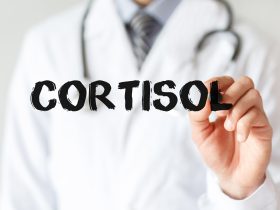Carpal tunnel syndrome (CTS) is a condition characterized by the compression of the median nerve in the wrist, leading to pain, tingling, numbness, and eventual weakness in the hand and fingers. Managing CTS involves lifestyle changes, medication, and, in severe cases, surgery.
Symptoms of Carpal Tunnel Syndrome
Carpal Tunnel Syndrome (CTS) is a health condition that primarily affects the palm side of the hand, specifically targeting the thumb, index finger, middle finger, and part of the ring finger. This condition arises when the median nerve, which runs from the forearm into the palm, becomes compressed or squeezed at the wrist.
The median nerve is crucial as it provides sensation to these fingers and controls the muscles at the base of the thumb.
Common symptoms of CTS include a range of sensory and motor issues. Tingling and numbness are often the first signs, typically occurring in the thumb, index, middle fingers, and half of the ring finger. These sensations can be sporadic at first, often experienced during activities such as driving, holding a phone, or reading a book.
Over time, the symptoms may become more persistent and severe, with many people experiencing increased pain and numbness at night. This nocturnal pain can be intense enough to disturb sleep.
Loss of sensation in the affected fingers is another hallmark of CTS. This can progress to the point where the fingers feel constantly numb or tingly, reducing the ability to perform fine motor tasks.
Decreased grip and pinch strength are common, making it difficult to hold objects, open jars, or perform other tasks requiring manual dexterity. This weakness is often due to the weakening and eventual atrophy of the muscles at the base of the thumb, known as the thenar muscles.
Muscle atrophy in this area can lead to noticeable changes in the hand’s appearance and function. The thenar muscles may shrink, creating a visible dent at the base of the thumb.
As the condition progresses, individuals may also experience a sensation of swollen or puffy fingers, even though no actual swelling is present. This sensation is a result of the nerve’s impaired function.
A decreased range of motion in the fingers can also occur, making it difficult to fully extend or flex the fingers. This stiffness can further impair hand function, complicating everyday tasks. Additionally, individuals with CTS often report difficulty determining temperatures by touch, increasing the risk of burns or frostbite because they cannot accurately sense hot or cold objects.
Dropping objects is another frequent issue, stemming from both the weakened grip and the numbness in the fingers. This can be particularly frustrating and dangerous, especially when handling fragile or hazardous items.
Overall, the impact of CTS on daily life can be significant, affecting both professional and personal activities. Early diagnosis and treatment are crucial to managing symptoms and preventing long-term damage.
Causes of Carpal Tunnel Syndrome
The carpal tunnel is a narrow passageway in the wrist, about an inch wide, that houses the median nerve and nine flexor tendons.
Compression of this tunnel, often due to swelling or thickening of the tendons, can lead to Carpal Tunnel Syndrome (CTS). Various factors can increase the risk of developing CTS, including:
- Gender: Women are more likely to develop CTS than men, possibly due to having a smaller carpal tunnel.
- Obesity: Excess weight can put additional strain on the wrist, increasing the risk of CTS.
- Pregnancy or menopause: Hormonal changes during these periods can cause swelling, which may compress the median nerve.
- Wrist fractures or trauma: Injuries to the wrist can alter the anatomy of the carpal tunnel and put pressure on the median nerve.
- Arthritis: Inflammatory conditions like rheumatoid arthritis can cause Carpal Tunnel Syndrome because of swelling and inflammation in the wrist.
- Diabetes and other metabolic disorders: Conditions like diabetes can increase the risk of nerve damage, including CTS.
- Aging: The risk of CTS increases with age, as wear and tear on the wrist accumulates over time.
- Sleeping on a bent wrist: This position can increase pressure on the median nerve and exacerbate symptoms of CTS.
- Thyroid or pituitary disorders: Hormonal imbalances can lead to swelling and compression of the median nerve.
- Gout: This condition can cause uric acid crystals to accumulate in the joints, leading to inflammation and swelling.
- Ganglion cysts or tumors: These growths can form within the carpal tunnel, putting pressure on the median nerve.
- Bone spurs: Extra bone growths can narrow the carpal tunnel space, compressing the median nerve.
- Infections: Infections in the wrist area can cause swelling and inflammation, leading to CTS.
- Family history of CTS: Genetics can play a role in the susceptibility to CTS, with a family history increasing the risk.
These risk factors highlight the multifaceted nature of CTS, where anatomical, physiological, and environmental elements contribute to its development. Recognizing and addressing these factors early can help in managing symptoms and preventing progression.
For those at higher risk, taking preventive measures such as ergonomic adjustments, weight management, and monitoring of underlying health conditions can be crucial in reducing the likelihood of developing CTS.
Diagnosis of Carpal Tunnel Syndrome
CTS is diagnosed through physical exams and tests that assess nerve function. Common diagnostic tests include:
- Tinel’s Sign and Phalen’s Test: These tests help reproduce CTS symptoms.
- Nerve Conduction Study: Measures the intensity and speed of electrical impulses along the median nerve, which are reduced in CTS.
- Electromyography (EMG): Involves inserting tiny needles into muscles to measure electrical activity, detecting abnormalities indicative of CTS.
Treatment Options for Carpal Tunnel Syndrome
Lifestyle Changes
Minor adjustments in daily activities can alleviate and potentially reverse CTS symptoms:
- Avoiding Aggravating Activities: Take breaks to rest your hand.
- Using Ergonomic Tools: Choose devices with thicker handles to reduce muscle stress.
- Wearing a Splint: Keeps the wrist in a neutral position, reducing tension on the median nerve.
- Proper Posture: Ensure your workstation setup minimizes pressure on your median nerve.
Alternative Treatments
Alternative therapies may help reduce CTS symptoms, though more research is needed to confirm their effectiveness. These treatments include acupuncture, yoga, chiropractic care, and an anti-inflammatory diet.
Carpal Tunnel Exercises
Specific exercises can reduce stiffness and improve nerve gliding, which involves moving tendons and muscles in a way that alleviates tension and pain.
These exercises should be performed several times throughout the day, such as:
- Spreading and closing fingers.
- Touching the thumb to each finger.
- Stretching the forearm by bending the wrist in different directions.
- Performing nerve gliding sequences.
Medications
Nonsteroidal anti-inflammatory drugs (NSAIDs) like ibuprofen, naproxen, and aspirin can help alleviate CTS symptoms. Severe cases may require oral steroids or cortisone injections.
Surgery
In some cases, surgery known as carpal tunnel release may be necessary to relieve pressure on the median nerve.
This common procedure involves cutting the ligament forming the roof of the carpal tunnel, either endoscopically through small wrist incisions or as an open procedure with a larger incision.
Full recovery can take up to a year, although symptoms are often reversed post-surgery.
Risks of Untreated Carpal Tunnel Syndrome
Untreated CTS can lead to permanent nerve damage, resulting in chronic numbness and decreased hand function. Early intervention is crucial.
Preventing Carpal Tunnel Flares
To reduce the risk of CTS flare-ups, regularly perform CTS exercises and maintain good ergonomics. Address symptoms early by wearing a splint, particularly while sleeping, and consult a healthcare provider if conservative treatments are ineffective.
Understanding and managing CTS through a combination of lifestyle adjustments, medical treatment, and preventive measures can significantly improve outcomes and quality of life for those affected by this common condition.















Find Us on Socials